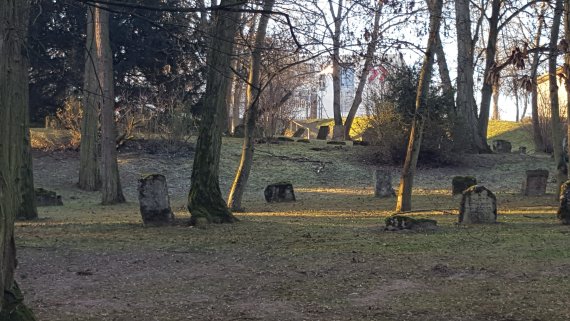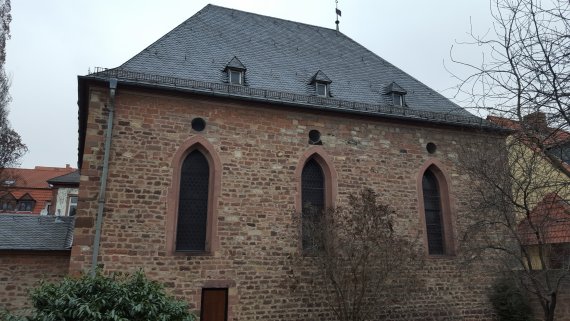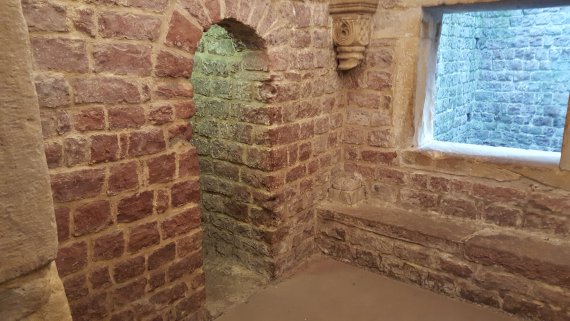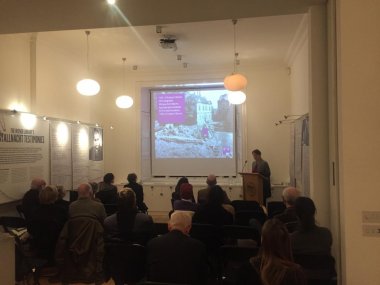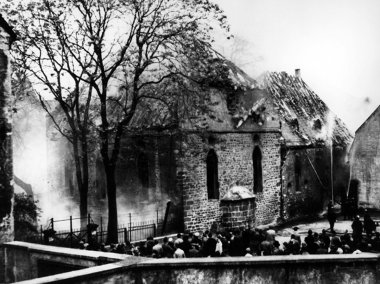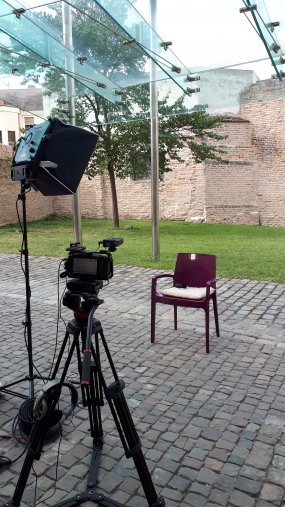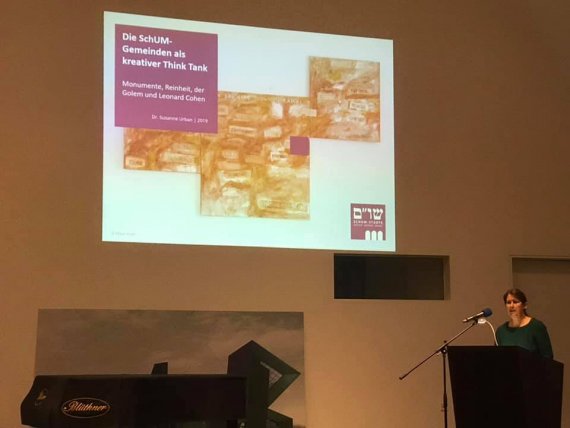Events in Retrospect
Step by step towards the Enscription as World Heritage. A lecture series in Mainz, Worms and Speyer in January and February 2019
In 2004 an initiative started, promoted by the mayor of the city of Worms, Michael Kissel, with the Jewish Community of Mainz and the association Warmaisa, to recognize the SchUM-sites as World Heritage Site. Since 2006, the State of Rhineland-Palatinate works intensively on this task - together with the three cities, the Jewish Community Mainz, the National Association of Jewish Communities of Rhineland-Palatinate and the Jewish Community of Rheinpfalz. They aim that the unique monuments and their inspiring and influencing architecture to be listed as UNESCO World Heritage. In January 2020, the application will be submitted to UNESCO. A year before this, representatives from various institutions explained the current status of the proposal and underlined the importance of SchUM - the monuments, but also of the intangible heritage.
The first event - held in Mainz - was opened by Minister Prof. Dr. Konrad Wolf: »After many years of preparation and meticulous detail work, we are now on the home straight. In September this year, we will present the UNESCO World Heritage Application for the Schum sites for completeness review ... The present results of the scientific expertise confirm our assessment that the ShUM-Sites are an exceptional World Heritage in Rhineland-Palatinate.« Dr. Stefanie Hahn (Ministry) underlined: »In no other place in Europe is there a comparable spectrum of Jewish monuments and sites from the 10th to the 13th century. They illustrate the cultural achievements of European Jews in the formation phase of Ashkenazi Jewry in a special way.« Prof. Matthias Untermann from the University of Heidelberg and Dr. Christoph Cluse from the University of Trier reported on the scientific theses of the application. Dr. Peter Waldmann of the Jewish Community Mainz: »There is a Jewish story beyond the Shoah.« ShUM, however, is »not a history of harmony, nor is it a story of the wonderful life between Jews and Christians.«
The public interest was extremely large and also highlights the curiosity about these outstanding monuments and the Jewish life in past and present. Venues for the series of lectures organized by the Ministry of Science, Further Education and Culture and the Directorate-General for Cultural Heritage in Mainz were the Landesmuseum and in Worms the Worms Congress Center.
Lecture in Wiener Library, London, January 30, 2019
In the context of the exhibition »Shattered« on the Novemberpogroms 1938, Susanne Urban was invited to give a lecture.
Remembering and analyzing the so-called Crystal Night, the Pogroms from November 1938, is important as it touches upon many layers. The night when synagogues were set on fire, the mornings when everyone could see and smell what happened, these days were also the next step towards mass deportations – after the deportations of Polish Jews from Germany in the end of October 1938. The pogroms had a huge impact on the spaces and places where synagogues were desecrated, burnt and then finally torn down and removed from the city structure, the city’s image and the city’s commemoration. The pogroms were a turning point and a further escalation in German politics, which the Jewish World will remember forever. The burning synagogues are, much more than the thousands of shops, flats and community buildings, that were destroyed and vandalized, an iconographic reminder of this turning point. Immersing into the History of Worms Synagogue, its grandeur in the past, its destruction and how and why and by whom it was rebuilt is also a glimpse into the brightest and darkest eras of Germen-Jewish History and how Germany acted Post-Shoah - which was presented in the lecture in a multiperspective way.
European days of Jewish Culture, September 1, 2019
Since 1999, the »European Association for the Preservation and Promotion of Jewish Culture and Heritage« has coordinated the European Day of Jewish Culture under an annually changing motto. To mark its 20th anniversary in 2019, each coordinating body is to issue its own leitmotif to reflect the diversity of European Jewry.
Our motto for 2019 was: »And action! Your statement for ShuM«
The unique monuments and the outstanding immaterial heritage of the former ShUM communities were our spotlight in 2019. The unique ShUM-Sites shall be enlisted as UNESCO World Cultural Heritage Sites. The application is on the final meters - the nomination dossier will be handed over to UNESCO in Paris in January 2020.
On the European Day of Jewish Culture we have involved you and you have cast your vote for SchUM.
Now the statements will be cut into a clip and will be uploaded in late autumn 2019 on our website and on the YouTube channel of the SchUM-Städte e.V.
Exhibition in the former Synagogue Kitzingen, September 5, 2019
- Opening of exhibition Wine and Judaism in Kitzingen1,34 MiB
- Opening of exhibition Wine and Judaism in Kitzingen2,98 MiB
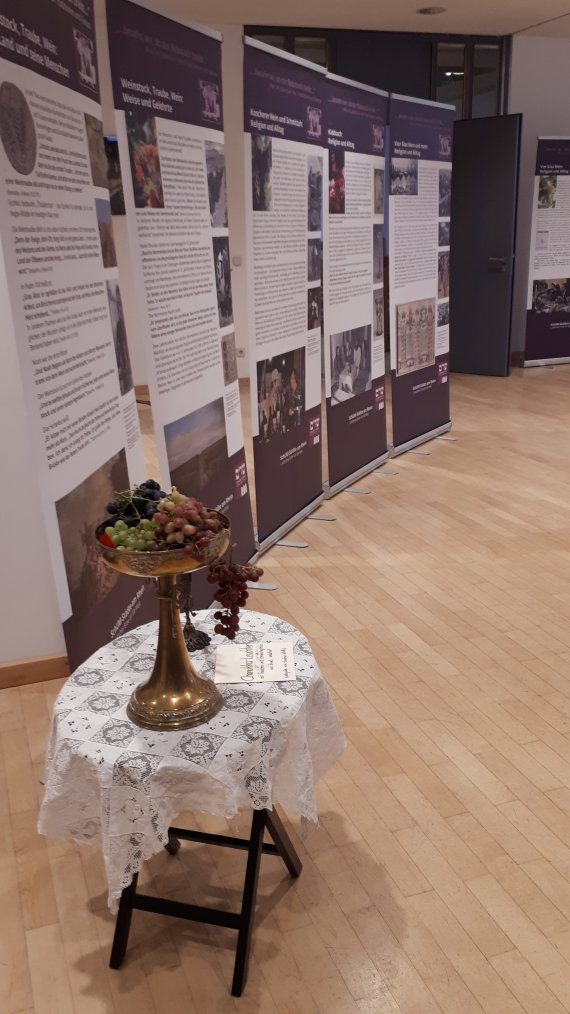
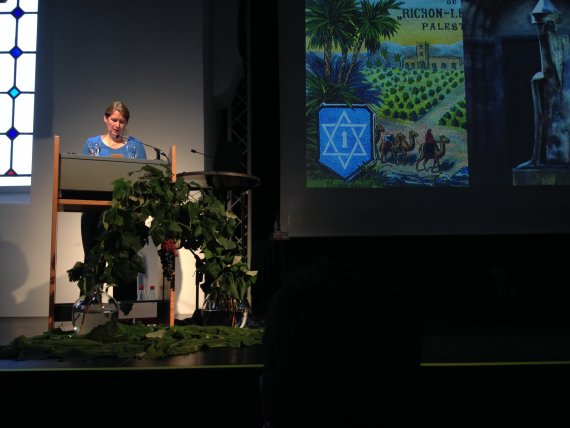
SchUM-Städte e.V. in Kitzingen: its exhibition on Wine and Judaism opened on 5 September in the former synagogue in Kitzingen and continued until 26 September.
In addition to the exhibition of the SchUM-Städte e.V. the Förderverein of the former synagogue Kitzingen showed own exhibition panels about the Jewish history in Kitzingen. In 1906, the town counted 52 Jewish and 50 Christian wine merchants. The Jewish wine merchants contributed to the economic development and helped Kitzingen to become a wine trading centre. The economic development by the Jewish wine merchants can be explained by their innovative advertising strategies, ambition, discipline and the search for new markets. One of the most famous names in the Jewish wine trade at the beginning of the 20th century is Max Fromm. With 90 employees, wine wholesale was the leading top in the Kitzinger wine trade. Fromm was also one of the main initiators of the Bocksbeute distribution of Franconian winery owners. They had made the Bocksbeutel the trademark of Franconian wine. More than 1,200 visitors were counted in Kitzingen.
Contributions to the Jewish Cultural Days in Mainz and Worms, October 2019
Two contributions by SchUM-Städte e.V. to the Jewish Cultural Days in Mainz and Worms dealt with very different perspectives on ShUM.
In Mainz we traced the followed the traces of ShUM still known today and anchored in the Jewish tradition - from the Golem to the Unetane Tokef and the version by Leonard Cohen. Thanks to the Jewish Community Mainz for their hospitality in the New Synagogue.
In Worms, the audience participated with great commitment, with their own ideas and ideas for the digital and museum communication of the ShUM heritage.
Press conference on the App Jewish History of Worms, October 23 2019
- University Worms Presentation App508,55 KiB
- University Worms Presentation App884,77 KiB
- University Worms Presentation App378,84 KiB
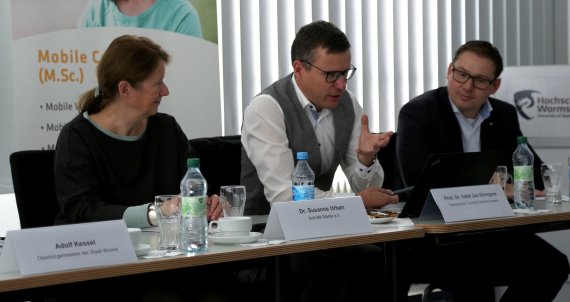
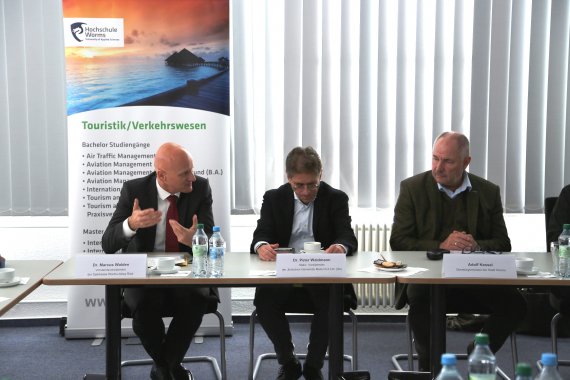
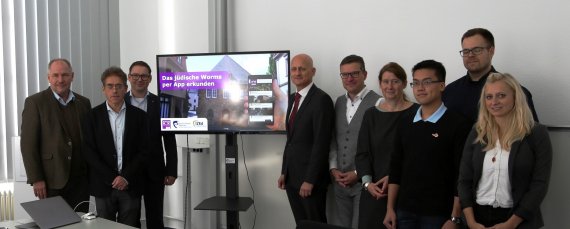
A storytelling app was developed in a cooperation project between the Worms University of Applied Sciences and the association SchUM-Städte Speyer, Worms, Mainz e.V. in order to be able to explore the unique Jewish monuments of the SchUM community in Worms during a walk. On 23 October 2019, the participants informed the press and the public about the project. With the help of three short stories, tourists and locals can use the app »Jewish Worms« to learn about the Jewish cemetery »Heiliger Sand«, the area around the synagogue and, above all, the mikveh. The narratives are richly illustrated with photographs and drawings from various decades and take the users on a journey through time to the years 1905, 1985 and 2018.
Dr. Peter Waldmann, Deputy Chairman of the Jewish Community Mainz: »The app leads to a new experience of the monuments. It is important to convey Jewish culture and Jewish life beyond the Shoah. The stories cover many layers of time.«
https://schumstaedte.de/en/app-jewish-history-in-worms/
Seminar Moreshet - Jewish Heritage Network in Worms, November 17 to 19, 2019
- Moreshet Seminar Nov 20193,20 MiB
- Moreshet Seminar Nov 20193,01 MiB
- Moreshet Seminar Nov 20192,18 MiB
- Moreshet Seminar Nov 20191,25 MiB
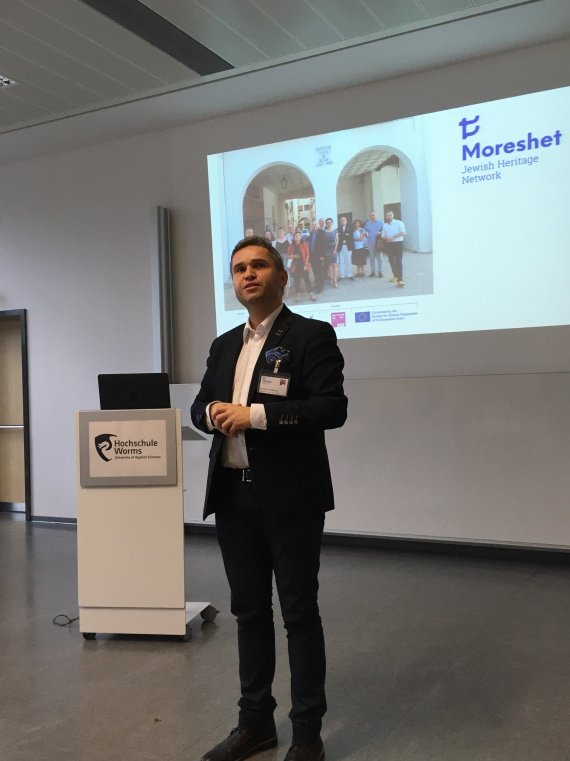
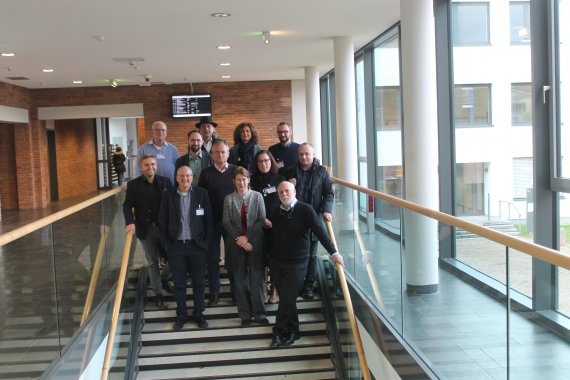
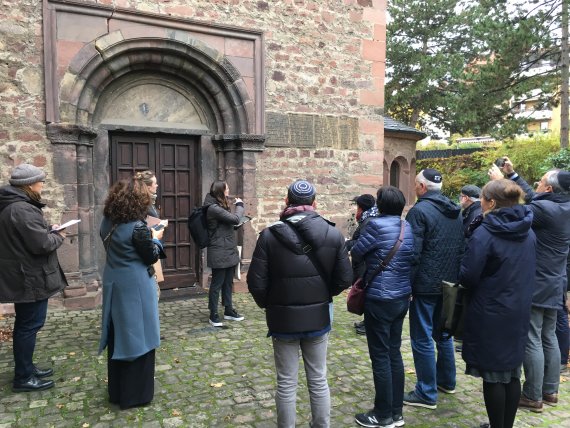
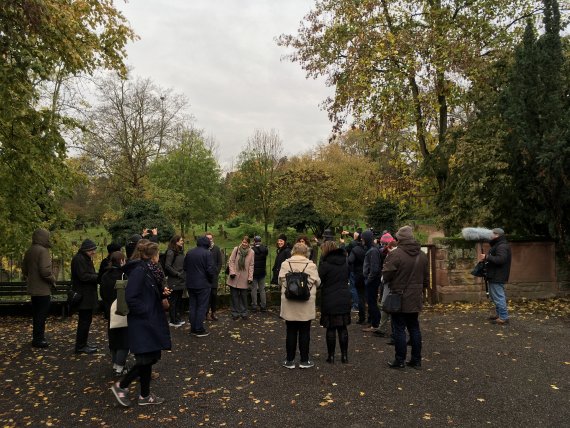
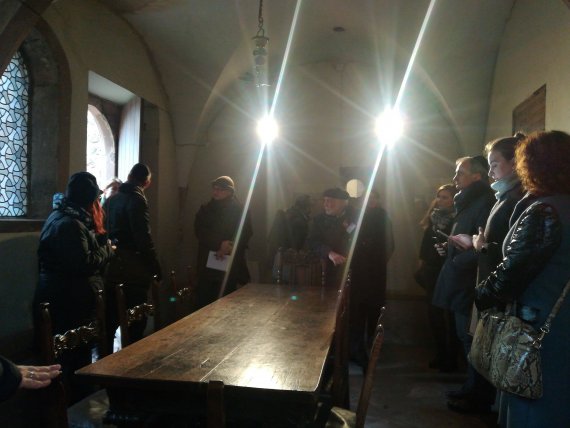
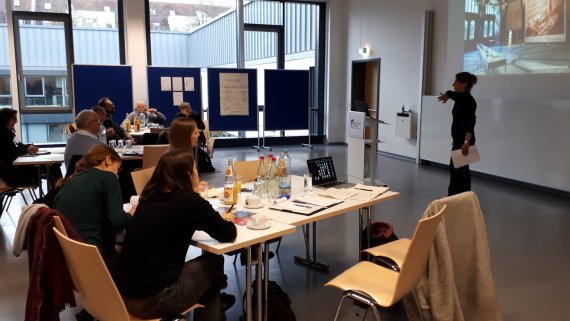
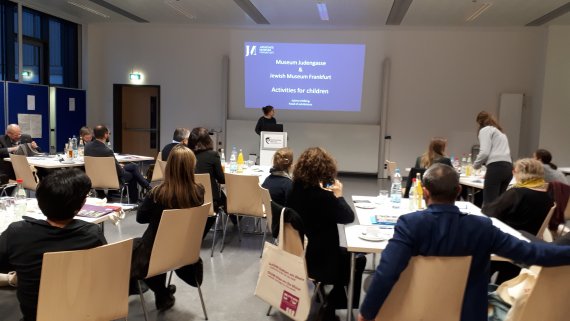
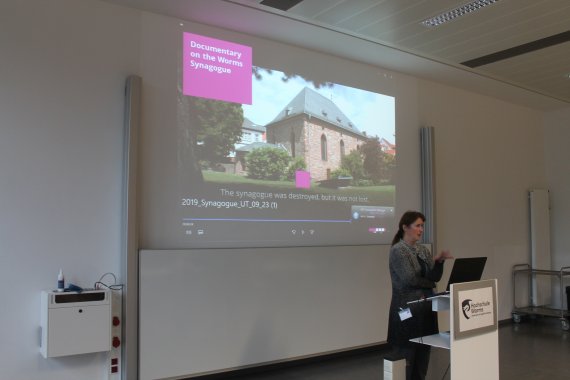
The starting signal was given in August 2018: Representatives of the cities of Krakow, Wroclaw, Mantua, Hijar, Worms and the European Foundation for Jewish Heritage in London joined forces and, under the leadership of their partner in Krakow, the Małopolski Instytut Kultury w Krakowie, submitted an application for EU funding. As part of the "Europe for Citizens" programme, a network of Jewish sites in Europe is being established. First of all, the above-mentioned cities come together in this network to network their extraordinary heritage, which has various similarities, and to gradually include other places and institutions. The funds were approved in December 2018.
The project leader is the Malopolska Institute of Culture in Krakow http://english.mik.krakow.pl/. The partners are: Wrocław (city Wrocław), Worms (SchUM-Städte e.V.), Hijar (Ayuntamiento de Híjar), Mantova (Comunità ebraica di Mantova) and London (Foundation for Jewish Heritage).
The overall objective: to establish a cooperation between regions and cities that understand Jewish heritage as part of their cultural history under the title »Moreshet - Jewish Heritage Network«, in order to establish a dialogue and exchange on the preservation of Jewish cultural heritage and its presentation. The focus is on promoting a common European approach to Jewish heritage and raising awareness of the dangers of intolerance and prejudice. Experiences on working methods, best practices and practical approaches to conservation, presentation and tourism will be exchanged and discussed. Experts dealing with Jewish heritage throughout Europe should guarantee an even more professional and consistent approach to the debate and preservation of the Jewish heritage. After a kick-off seminar in Hijar, Spain, in July 2019, a seminar was held in Worms, Germany, in November 2019 on the involvement of young people in the preservation of Jewish heritage.
The Mayor of Worms, Adolf Kessel, warmly welcomed the participants and expressed his grattude that the City of Worms is part of this network.
About 40 experts from Germany and abroad had travelled to the seminar, from Germany the Jewish museums Frankfurt and Halberstadt were present, from Berlin the Centrum Judaicum, as well as the Pädagogisches Landeszentrum from Speyer and many other stakeholders in matters of education. Michael Auras and Jürgen Hamm reported on the progress made in the research and stabilization of the Mikwe Worms - how can a building be communicated to the outside world that will not be accessible for the time being? And how can young people be inspired for such research?
Michael Mail: »There is growing recognition throughout Europe of the importance of Jewish heritage.« The Moreshet-
project is therefore an important initiative. The project partners had come together to accompany the handling of Jewish heritage. The seminar focused on innovative activities. To inspire and reach young people is important, because it is about the history of the European past, but also about the European future. According to one conclusion, the Jewish community must be represented in its diversity and Jews must be presented as active, acting individuals. Textbooks, it turned out, are often very scarce in their representations. Therefore, materials that can be used in addition to the curricula are important. The seminar will provide handouts for cities and federal institutions.
Explore ShUM! Teaching unit online (in German only) since December 3, 2019
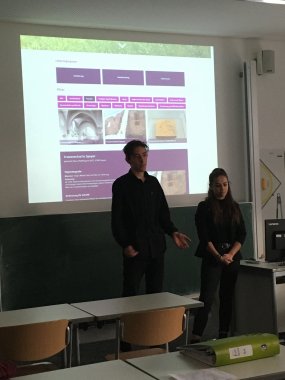
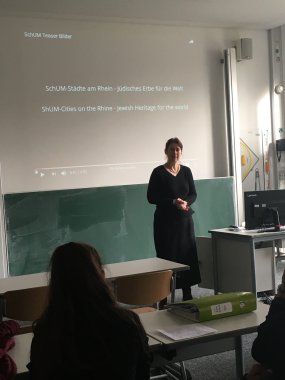
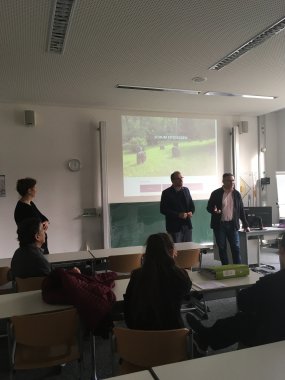
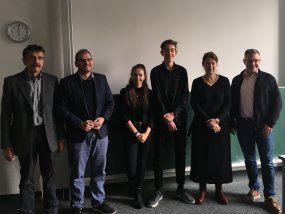
On 3 December 2019 the aim was reached: the teaching materials under the title »Explore ShUM« were launched online and presented to the public in the Katharinen-Gymnasium Ingolstadt.
Students of the Katharinen-Gymnasium Ingolstadt visited Speyer and Worms in 2018, discovered the medieval Jewish monuments and went on a foray through centuries. The 16 year olds on average approached the SchUM sites, dealt with stories and objects and presented their results in their own words. The basic idea was that pupils should develop interesting learning material for other young people. What was important to them, which objects were interesting for them? As a result, the material can now be presented on our website. It should also arouse the curiosity of other pupils and young people in extracurricular education to discover, explore and learn new things about SchUM. Apart from clichés, perspectives on SchUM are conveyed here and the inner-Jewish life and the innovative power of the SchUM communities are taken as a starting point.
Unfortunately the material is available in German only.
https://schumstaedte.de/entdecken

